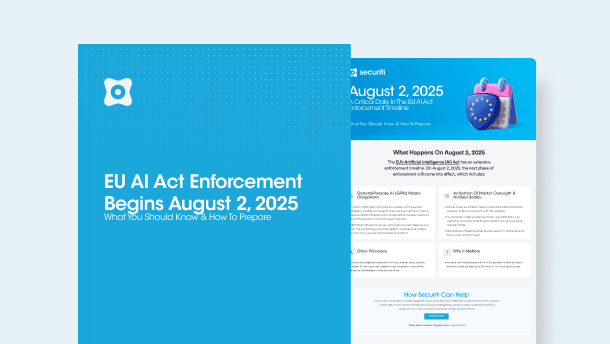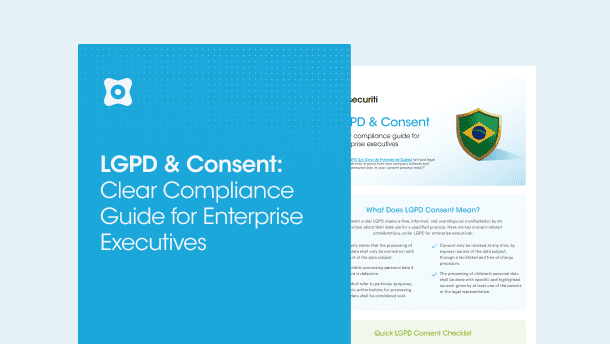Generative AI promises to expand organizational productivity tenfold. A remarkable combination of quality and quantity of content generation allows organizations to achieve greater efficiency than ever before. Organizations across various industries, such as healthcare, software development, media and publishing, academia, and cybersecurity, have leveraged generative AI tools to aid their operations in various capacities.
However transformative and disruptive as Generative AI may be, its immense potential can just as easily be leveraged for malicious acts by cybercriminals and attackers.
In the face of this, the Canadian Center for Cyber Security has recently published a guidance document identifying the major risks and the best practices to mitigate these risks. For organizations still grappling with how best to integrate generative AI into their daily operations, this guidance offers a chance to do so with minimal risk.
Major Risks Identified
The guidance is meticulous in identifying potential threats and risks businesses may face when deploying generative AI within their products and services. These include the following:
Misinformation has been a rampant issue for tech companies globally. However, it could evolve to more catastrophic levels via generative AI tools. With generative AI, malicious actors can produce deceptive and false information en masse, with the language being designed explicitly to influence and convince the public with greater certainty.
Phishing
Phishing has been a major cyber threat for decades, but generative AI can lead to far more sophisticated and frequent phishing attacks, raising their likelihood of success. As with misinformation, phishing emails can be generated with terrifying precise language, leading to potential identity theft, financial fraud, and other forms of cybercrime.
Data Privacy
Generative AI tools are still in their relative infancy. As time progresses, so will their potential and our ability to properly and responsibly leverage them to their maximum potential. However, until then, users may unintentionally expose their personally identifiable information (PII) or their employer’s sensitive data on these generative AI tools. Malicious actors may then leverage various techniques to access this vital data to impersonate individuals.
AI Poisoning
A relatively new threat that can compromise entire models. Instead of targeting a model itself, a malicious actor may instead opt to compromise the dataset the model is trained on. Doing so cannot only severely compromise the accuracy, quality, and transparency of the generated output but may also be leveraged along with some of the other threats identified for large-scale coordinated digital enterprise attacks.
Model Bias
It’s one thing for a generative AI model to be compromised due to a well-choreographed AI poisoning attack, but these models are just as vulnerable to unintentional inaccuracies or biases within the training datasets. Most models are trained on limited datasets scraped from open-source Internet sources. The bias in these sources may prejudice the training data, thereby influencing the model.
Intellectual property (IP) rights are already a bone of contention within the generative AI sphere. With questions revolving around the ownership of the art and content generated via generative AI tools, malicious actors may leverage these tools to steal large volumes of confidential corporate IP data at an accelerated speed. This can pose serious existential threats to an organization’s finances and reputation.
Recommended Countermeasures
The guidance states quite plainly that it may not always be possible to identify generative AI-assisted cyberattacks. However, it does outline several countermeasures that can be leveraged on both an organizational and individual level to mitigate the chances of success these attacks may have:
Organization Level
Access Governance
The guidance insists that only the most relevant individuals can access critical organizational assets. To do so, organizations are advised to adopt a practical access control framework that prevents unauthorized access to high-value resources.
Consistent Security Updates & Patches
Malicious actors have several tools that aid them in carrying out their attacks. More importantly, these tools are consistently being improved to raise their overall effectiveness. Hence, it is just as critical for organizations to adopt a similarly rigorous and proactive approach towards their security updates and patches as these are often the first and most important lines of defense against any cyberattack.
Network Security
An organization must adopt proactive and thorough network detection tools to ensure it can identify and address potential threats on its network before they’re able to cause any major disruption or damage. While Generative AI tools do promise effectiveness, there is a slight con to their usage as they put a tremendous strain on network resources. Such instances would be easily identified if the organization deployed a reliable network detection tool.
The guide provides additional information related to network security here.
Employee Training
An organization may have the best mechanisms and policies to prevent cyberattacks. However, these mean nothing if its employees do not understand or follow them. Hence, regular employee training sessions where appropriate training is provided to employees related to the countermeasures adopted and best cybersecurity practices can go a long way in ensuring cyberattacks have a far lesser chance of success.
Individual Level
Content Verification
Misinformation has already been identified as one of the most immediate dangers posed by generative AI owing to the quantity and quality of misinformation content that can be generated via such tools. Hence, employees must deploy their deepest logical faculties to verify all content they interact with to ensure they’re not subjected to social engineering or phishing attempts.
The guide provides helpful resources in this regard here.
Beware of Social Engineering
It’s not the latest trick up cyber attackers' sleeves, but it remains one of the most effective. And with generative AI, it is likely to become even more effective. Hence, individuals must implement basic digital safety practices such as minimizing the amount of personal information available online, interacting with email attachments from unknown sources, or conducting their communications via unverified or alternative channels.
The guide provides helpful resources in this regard here.
Sound Cybersecurity Hygiene
Simple measures such as strong passwords, multi-factor authentication (MFA), and a reliable anti-virus can prove vital in an organization’s cybersecurity countermeasure strategy as they minimize the likelihood of any weakness within its internal security framework.
How Can Securiti Help
If used responsibly, generative AI promises to elevate an organization’s performance, productivity, and revenues on an unprecedented scale. At the same time, owing to its relative infancy, the scale of the various risks associated with generative AI isn’t clear yet.
As a result, at least for now, organizations must walk a tightrope, balancing the risks and rewards of generative AI usage.
Securiti’s Data Command Center™ is an enterprise solution based on a Data Command Center framework that allows organizations to implement various modules, solutions, and mechanisms that can help address the security challenges posed by generative AI.
These include data privacy, regulatory compliance, and data security management.
Furthermore, it allows organizations to leverage various modules and solutions such as data access controls, data lineage, sensitive data intelligence, and others in line with this guidance’s recommendations.
Request a demo today and learn more about how Securiti can help you mitigate the challenges and risks posed by generative AI usage.








































